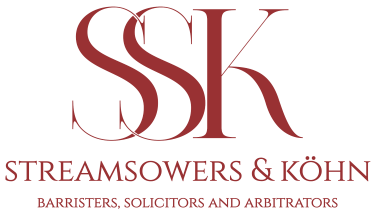
Recently, the Nigerian Stock Exchange (“NSE”) released the Guidance on Companies’ Virtual Board, Committee, and Management Meetings (“the Guidance”) to aid listed companies in complying with the provisions of statutes when holding their meetings during the COVID-19 pandemic. This was a few weeks after the Corporate Affairs Commission (“CAC”) also issued Guidelines on holding of Annual General Meetings (AGM) of Public Companies using Proxies (‘CAC’s Guidelines’)
The Guidance seeks to provide some guidance to the market and other stakeholders on carrying out successful and productive virtual meetings. The goal is to ensure that such meetings are transparent and efficient while meeting the important business and corporate governance needs of all relevant stakeholders.
The Companies and Allied Matters Act and Virtual Meetings Section 263 (1) of the Companies and Allied Matter Act, Cap. C20 LFN 2004 (“CAMA”) provides that directors may meet together for the despatch of business, adjourn, and otherwise regulate their meetings as they think fit. CAMA is silent on the issue of virtual meetings. This is not surprising, considering that CAMA was enacted in 1990 and virtual meetings may not have been within the purview of most professionals involved in governance discussions at the time. Albeit, CAMA does not expressly prohibit virtual meetings.
As such, companies can freely exercise discretion in integrating virtual meetings with their business processes without recourse to the CAC. Provided of course that the resolutions from and conduct of such meetings meet the requirements for conducting valid meetings under CAMA. Without prejudice, however, CAC’s Guidelines lay down policy that will inform the conduct of AGMs by Public Companies.
CAC GUIDELINES
The CAC Guidelines recommend that companies take advantage of section 230 CAMA on the use of proxies in holding their Annual General Meetings. Where a company decides to hold its AGM by proxies, the following procedure and conduct should be observed:
- The approval of the Corporate Affairs Commission (CAC) shall be obtained before such a meeting is held.
- Notice of meeting and proxy form shall be sent to every member in accordance with the requirements of CAMA with the evidence of postage or delivery of such notices delivered to the CAC after the meeting.
- In the notice, all members must be advised that in view of the Covid-19 pandemic, attendance shall only be by proxy with a list and particulars of persons willing to act as proxies for them to select therefrom.
- Quorum for the meeting shall be guided by the Articles of Association or CAMA.
- Only Ordinary business shall be discussed at the AGM as provided in S.214 of CAMA. Where any Special business is considered very urgent and necessary, an application shall be made to the CAC.
- Where the CAC does not send a representative as an observer, the company shall send a detailed report to the CAC, after the meeting.
NSE GUIDANCE
What constitutes virtual meetings?
The NSE defines virtual meetings as meetings that occur when people, irrespective of their physical location, can communicate effectively during pre-scheduled teleconferences, web conferences, or video conferences, with the ability to utilize video, text, or audio features via the meeting medium, whilst being in the same virtual space for a specific period.
The NSE Guidance outlines various provisions in relation to the preparation for virtual meetings, the need for technical support, compliance with protocols involved, and the responsibilities of participants in and other related matters. The Guidance also recommends that the Articles of Association of a company or its Board, Committee, and Management Charters or Terms of Reference should provide or be altered to provide for and authorize virtual meetings.
Facilitating a virtual meeting in order to conduct seamless virtual meetings, the NSE recommends the following:
- · A precise agenda which clearly sets out the matters to be considered must be drafted by the Company Secretary. In drafting the same, the persons responsible for documents to be considered, the various presenters, the desired outcomes, and the time allotted for each agenda item, would have been carefully identified, decided, and noted.
- · External attendees should be given priority during presentations. This is to enable external attendees to leave the meeting after their presentation, to allow members to focus on other items on the agenda.
- Ahead of the meeting time, all attendees must confirm their intention to participate in the meeting virtually. The Chairman must be informed of the names of the virtual attendees or their authorized representatives, to ensure that the meeting is structured to accommodate them.
- The Chairman should ensure that all virtual attendees stay engaged, are active contributors, and do not feel ignored.
- The Company Secretary should ensure that all meeting materials are circulated ahead of time in line with CAMA and the Board/Committee or Management’s Charter or Terms of Reference.
- All relevant equipment including but not limited to conference phones, call-in number/links, Internet connectivity, microphones must be proactively procured and made available to the attendees ahead of the meeting.
- There must be provision for adequate support to be rendered to attendees in order to respond to any inquiries or to pass across any changes in the conduct of the meeting.
- To guarantee the security of information exchanged during meetings and details of attendees, companies must devise means of protecting virtual meetings from being hijacked, eavesdropped on, infiltrated, or manipulated.
- The Company Secretary should arrange for a dry run/rehearsal before the virtual meeting to ensure that facilities put in place for the virtual meeting are functioning well.
Roles and responsibilities of Participants;
Company Secretary
In addition to the responsibilities assigned to the Company Secretary by the CAMA and the duty to oversee all processes involved in preparing for a virtual meeting, the Company Secretary is advised to:
- Ensure that materials being reviewed are, as much as possible, projected onto the media platform/screen so that each participant can follow the discussions efficiently and make references with ease.
- Continuously monitor messages from virtual attendees, so that attendees can effectively communicate without interrupting the flow of the meeting.
- Collaborate with the IT team of the company to ensure that virtual attendees are provided with a safe and secure method of virtual presence.
- Notify the Chairman when a question is raised, or a participant desires to speak via any chat window or relevant software employed.
- Develop and circulate virtual meeting policies of the company with the new participant(s).
Virtual Attendees
Virtual attendees are enjoined to do the following amongst others:
- Promptly notify the Company Secretary of their intention to attend a part of, or the full meeting virtually and treat information received with confidentiality and sensitivity.
- Ensure they have sufficient understanding of the technologies to be used to connect with/support a virtual meeting before the meeting.
- Provide accurate identification when joining a virtual meeting and always signify any desire to ask a question or comment on an issue using the designated “chat” box.
- Maintain order when making comments to avoid interrupting speakers.
- Manage allotted presentation time as efficiently as possible and give other attendees some time to take notes.
- Observe information security and confidentiality protocols, including keeping uninvited people off the call or vicinity of the virtual meeting media in use.
- Endeavour to attend all meetings read all documentation and prepare thoroughly in advance of meetings.
The Chairman
In carrying out his/her functions with the use of technology, the Chairman is enjoined to observe the following practices to ensure a smoothly run and productive virtual meeting where all participants feel included and engaged:
- Set expectations at the beginning and establish meeting goals and objectives.
- Create rules of engagement, particularly regarding muting and whether cameras should be switched on.
- Remind/encourage all virtual attendees to adhere to their responsibilities and virtual meeting protocols.
Adhere as practicably as possible, to the timeframes stipulated in the agenda.
- Keep an up-to-date list of virtual attendees and their phone numbers for ease of reach in the event of a technological glitch.
- Take control of discussions to maintain order, ask relevant questions, build team rapport and keep virtual attendees engaged.
- Debrief at the end of virtual meetings.
- Encourage virtual attendees to provide feedback and share lessons learned regarding these or any additional best practices.
- Technical support
The success of a virtual meeting relies solely on the strength of technology infrastructure put in place by the Company and the participants. The Company Secretary thus has a duty to ensure that good technical support is available for and during the meetings. The Company Secretary should work closely with the company’s IT team to determine the details of the virtual meeting, the technology media to be used, practical means of contacting attendees, and develop technical assistance.
Virtual attendees should ensure that they are well equipped and prepared to use the necessary technology tools for participating virtually and contact the Company Secretary or technical team for assistance.
Conclusion
The NSE Guidance and the CAC Guidelines are laudable introductions that set the tone for the conduct of virtual meetings and the role of regulators in aligning with change and innovation to cater for exigencies such as the COVID-19 pandemic. It is expected that holding virtual meetings will come with some challenges such as internet connectivity issues, insufficient information technology infrastructure, and cyber risks. It will also mean increased costs for the company.
Consequently, it is important that in applying the NSE’s Guidance and CAC Guidelines, corporate entities will have to answer in the affirmative, questions that may relate to their ability to reach stakeholders, availability of a plan to give equal opportunities to both in-person and online participants (in the case of a hybrid meeting), the ability of stakeholders to understand the purpose of virtual meetings and whether the virtual meeting is in the best interest of the majority of the company’s stakeholders.
Finally, we believe that the NSE Guidance and the CAC Guidelines complement each other given the common objective. They are also a form of best practices policy and as such, private companies should adopt a few of these guidelines.
Disclaimer
SSKÖHN NOTES is a resource of the law firm STREAMSOWERS & KÖHN deployed for general information and does not constitute legal advice neither is it a substitute for obtaining legal advice from a legal practitioner.

